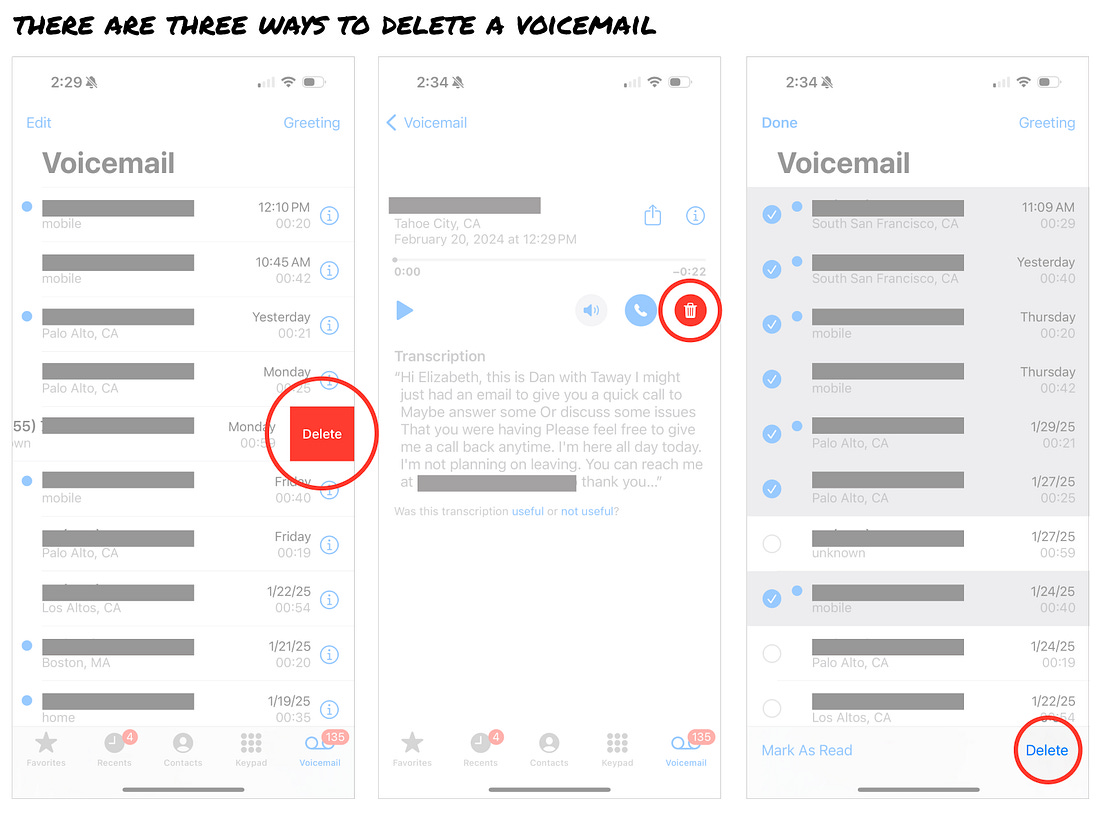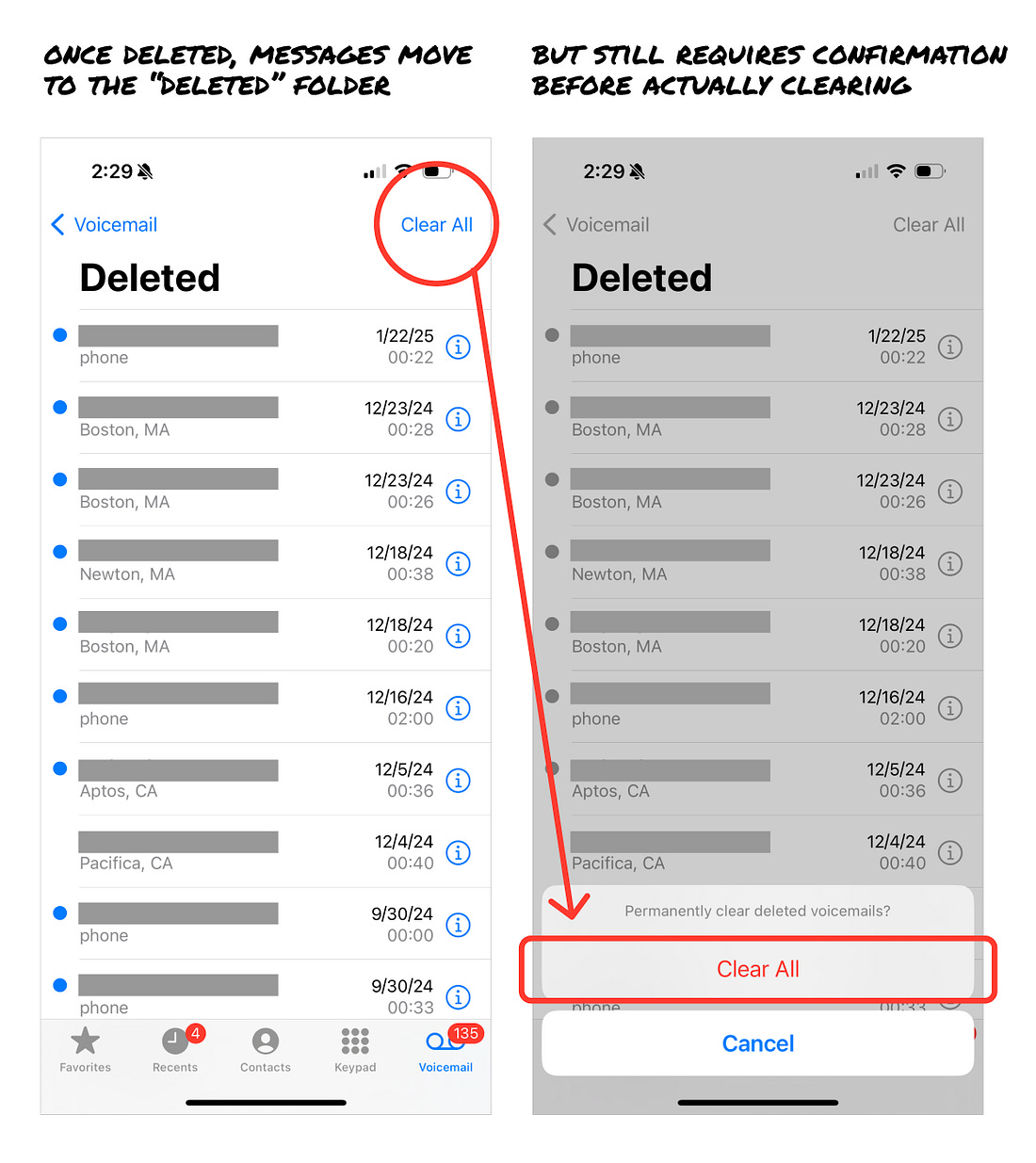Voicemail is a digital junk drawer.
Voicemail is the junk drawer of communication—ignored, never checked, never noticed. Until someone complains it’s full… This always comes as a surprise to me. My iPhone holds hundreds of thousands of photos, and countless apps. Yet there’s this bizarrely tiny storage limit for voicemails. To free up storage, I am painstakingly required to delete each message one by one. What are the issues?The iPhone’s voicemail UX fails for two main reasons:
1. Voicemail UX doesn’t align to user expectationsPeople expect voicemail to work like every other part of their phone experience, but it doesn’t. Storage — Voicemail is the only app on my phone that runs into storage issues (and doesn’t seem to be tied to iCloud’s storage plan). Bulk Actions — Voicemails are treated like bespoke treasures and I can’t intuitively take any bulk actions on them. Failure — Generally, apps prevent flat out failure and people expect some leeway. But if someone’s voicemail is full, it fails — nobody can leave a message. 2. Deleting voicemail requires effort.The voicemail app seems to have been designed with the assumption that voicemails are precious. But for me, about 90% of my voicemails are spam; another 8% are useless (or redundant with texts), leaving only ~2% that are relevant… For those 2%, nothing happens once I’ve read or listened to them, so even those accumulate. To clear my voicemail box, I have to manually delete each voicemail one at a time. There are three different ways to delete a voicemail, but all require selecting each email individually: Once deleted, voicemails still aren’t really deleted. They just move to the “deleted” folder and continue to take up space. To really delete a voicemail, one has to then delete the “deleted voicemails” from the “deleted” folder. At least for this, there is a “clear all” function, but that then requires another confirmation. What are the constraints?It seems the storage limit for voicemails is imposed by carriers (who actually handle voicemail). But nobody thinks about their carrier beyond signal strength and a monthly payment, so this just feels weird and incongruent with every other part of the phone UX. But let’s just assume the current storage space is a fixed constraint. How can we design better solutions?Good design works around (or with) constraints. These are a few key principles I use when thinking about potential design solutions:
1. Reduce effortMake things as easy as possible for people. Voicemail transcription to text is a good example of this because it provides multiple ways to consume a message (even if it’s quality isn’t always so great). Ideas:
2. Align with expectationsUnderstand how people expect a feature to work, consider parallel experiences, and design interfaces that align with users' mental models. Ideas:
3. Meet people where they areWhere do people spend their time? What are their patterns of usage? How does your app fit into that? What pulls them into the app, what do they do there, and where do they go afterwards? Ideas:
4. Prevent failureDon’t let experiences fail fully. This is like the empty gas tank light on a car — when the light comes on, there is still enough gas to get you to a gas station.
5. Deliver JoyLook for opportunities to delight people. Ideas:
Why could better UX be the work-around for limited storage?There are clearly hundreds of different approaches one could take to improve the user experience of voicemails on modern phones. The ideas mentioned above are just some of many. Voicemail may seem like a weird choice to even think about in our current, shiny AI-centered world. But it’s still a recurring pain point for me and strikes me as odd that it’s not a solved problem. Rather than just rattling off a bunch of seemingly random ideas to improve the iPhone’s voicemail UX, I shared the ideas with some structure to explain why these ideas came to mind for me. |
Similar newsletters
There are other similar shared emails that you might be interested in:




